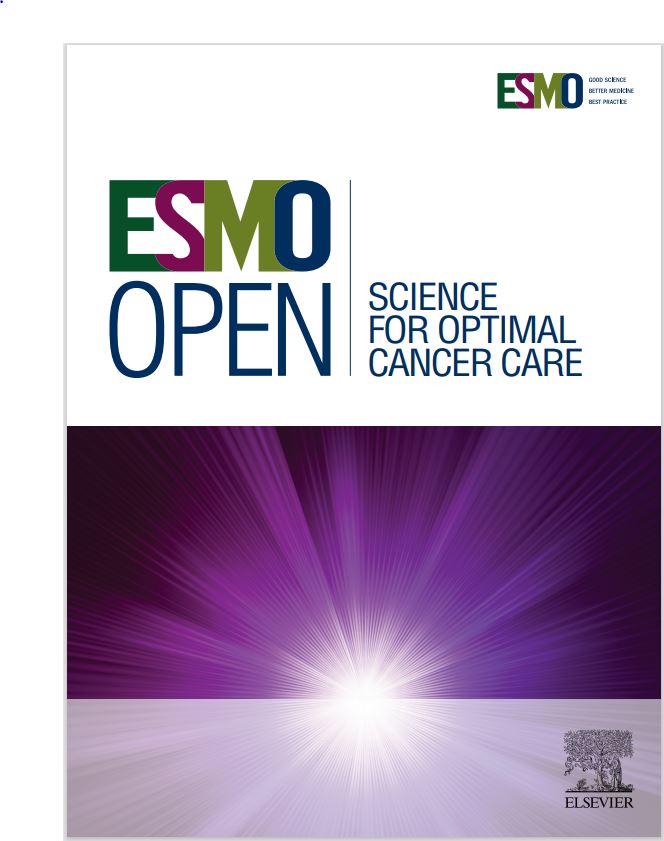在欧洲获得新型抗癌药物:各国之间的不平等及其驱动因素。
IF 8.3
2区 医学
Q1 ONCOLOGY
引用次数: 0
摘要
背景:越来越多的抗癌药物正在开发和批准。获得这些药物对于改善患者预后和整体护理质量非常重要,但在欧洲各国实现公平获取具有挑战性。方法:本研究回顾了欧盟(EU)和欧洲经济区(EEA)及其周边国家在监管审批、报销审批和临床使用三个关键阶段抗癌新药可及性的不公平现象。它还探讨了造成这些不平等的原因。该分析基于一组预先确定的国际利益攸关方公布的证据。结果:不平等在三个阶段有所不同。在监管阶段,由于欧洲药品管理局(EMA)的集中审批,欧盟/欧洲经济区国家之间的差异最小化,而该地区以外的准入情况更差。ema批准的药物的报销比例差异很大,从马耳他的0%到德国的96%不等,时间跨度跨度很大。结论:由于财政、组织、行政和能力方面的原因,欧洲各国患者获得新药的机会差异很大。从EMA和EU HTA法规的强制性监管批准来看,政策协调有可能减少不平等,但它不会解决潜在的经济和卫生保健系统限制。实现公平需要在卫生保健系统的创新、可负担性和可持续性之间取得平衡。本文章由计算机程序翻译,如有差异,请以英文原文为准。
Access to novel cancer medicines in Europe: inequities across countries and their drivers
Background
An increasing number of cancer medicines are being developed and approved. Access to these medicines is important for improving patient outcomes and overall quality of care, yet achieving equitable access across countries in Europe is challenging.
Method
This study reviews inequities in access to novel cancer medicines in countries of the European Union (EU) and European Economic Area (EEA), and neighboring countries, at three critical stages: regulatory approval, reimbursement approval, and use in clinical practice. It also examines reasons contributing to these inequities. The analysis builds on published evidence from a predefined set of international stakeholders.
Results
Inequities vary across the three stages. At the regulatory stage, disparities are minimized within EU/EEA countries due to centralized approval by the European Medicines Agency (EMA), while worse access exists outside this region. Reimbursement of EMA-approved medicines varies significantly, with rates ranging from 0% in Malta to 96% in Germany, and timelines spanning <100 days to nearly 1000 days. Alternative access schemes enable (limited) access before and after regulatory and reimbursement approval, which may change conclusions about access in some countries. Clinical use exhibits a 10-fold difference across countries in some cases, with Central and Eastern Europe consistently lagging. Contributing factors include country-specific prioritization of pharmaceutical companies for regulatory and reimbursement applications, health technology assessment (HTA) processes and criteria, constraints in financial resources for medicines and testing infrastructure, suboptimal care processes, organization, and continuing medical education.
Conclusion
Patient access to novel medicines differs widely across European countries, caused by financial, organizational, administrative, and capacity reasons. Policy harmonization, as seen with mandatory regulatory approval by the EMA and the EU HTA Regulation, has the potential to reduce inequities, but it will not address underlying economic and health care system constraints. Achieving equity will require a balance between innovation, affordability, and sustainability in health care systems.
求助全文
通过发布文献求助,成功后即可免费获取论文全文。
去求助
来源期刊

ESMO Open
Medicine-Oncology
CiteScore
11.70
自引率
2.70%
发文量
255
审稿时长
10 weeks
期刊介绍:
ESMO Open is the online-only, open access journal of the European Society for Medical Oncology (ESMO). It is a peer-reviewed publication dedicated to sharing high-quality medical research and educational materials from various fields of oncology. The journal specifically focuses on showcasing innovative clinical and translational cancer research.
ESMO Open aims to publish a wide range of research articles covering all aspects of oncology, including experimental studies, translational research, diagnostic advancements, and therapeutic approaches. The content of the journal includes original research articles, insightful reviews, thought-provoking editorials, and correspondence. Moreover, the journal warmly welcomes the submission of phase I trials and meta-analyses. It also showcases reviews from significant ESMO conferences and meetings, as well as publishes important position statements on behalf of ESMO.
Overall, ESMO Open offers a platform for scientists, clinicians, and researchers in the field of oncology to share their valuable insights and contribute to advancing the understanding and treatment of cancer. The journal serves as a source of up-to-date information and fosters collaboration within the oncology community.
 求助内容:
求助内容: 应助结果提醒方式:
应助结果提醒方式:


